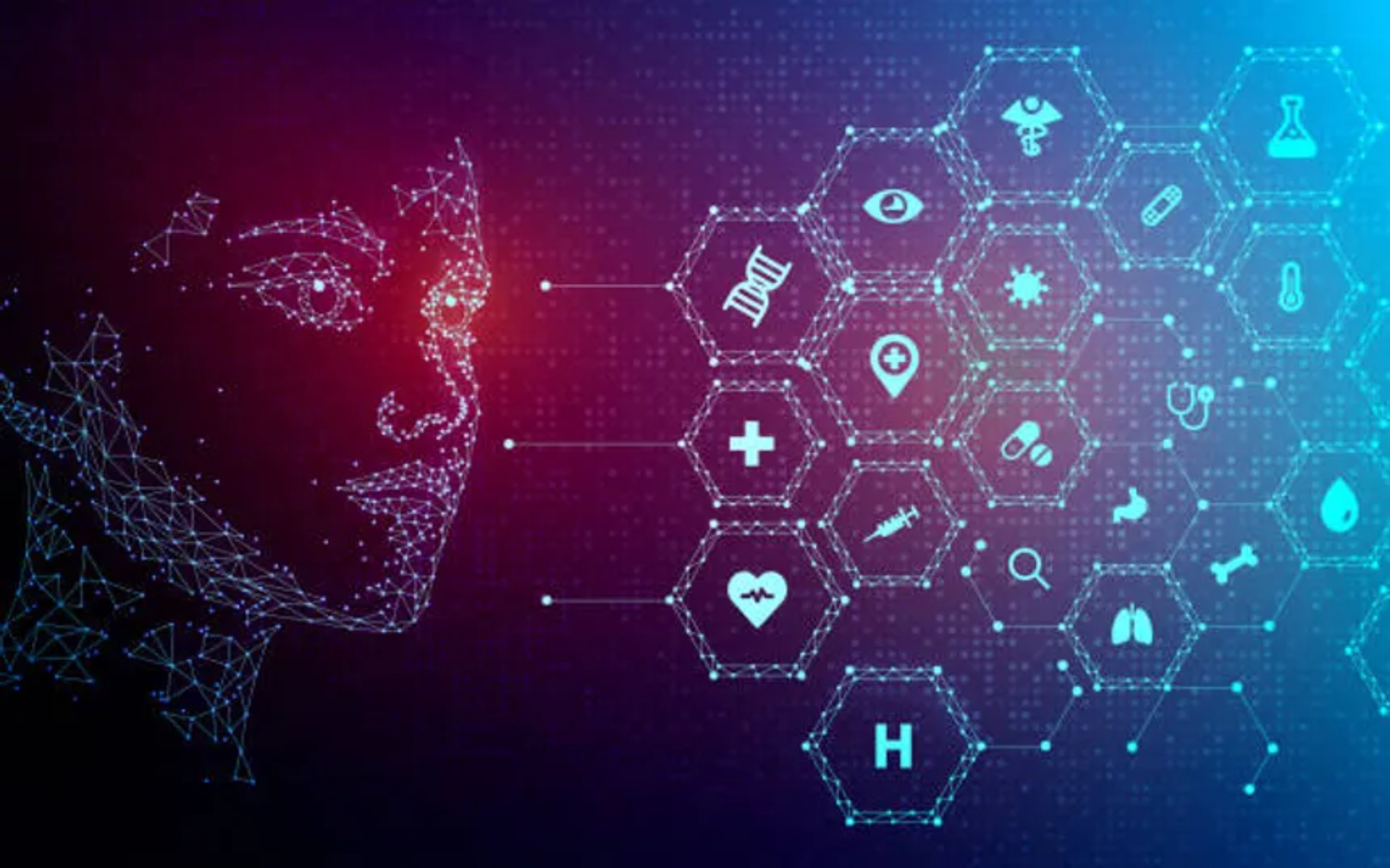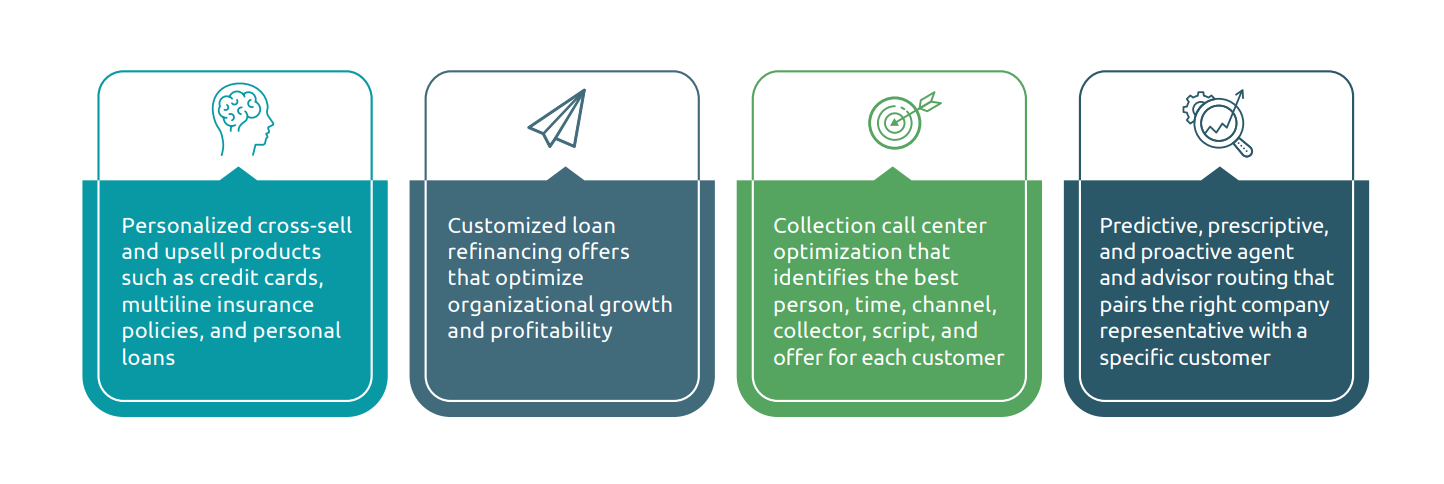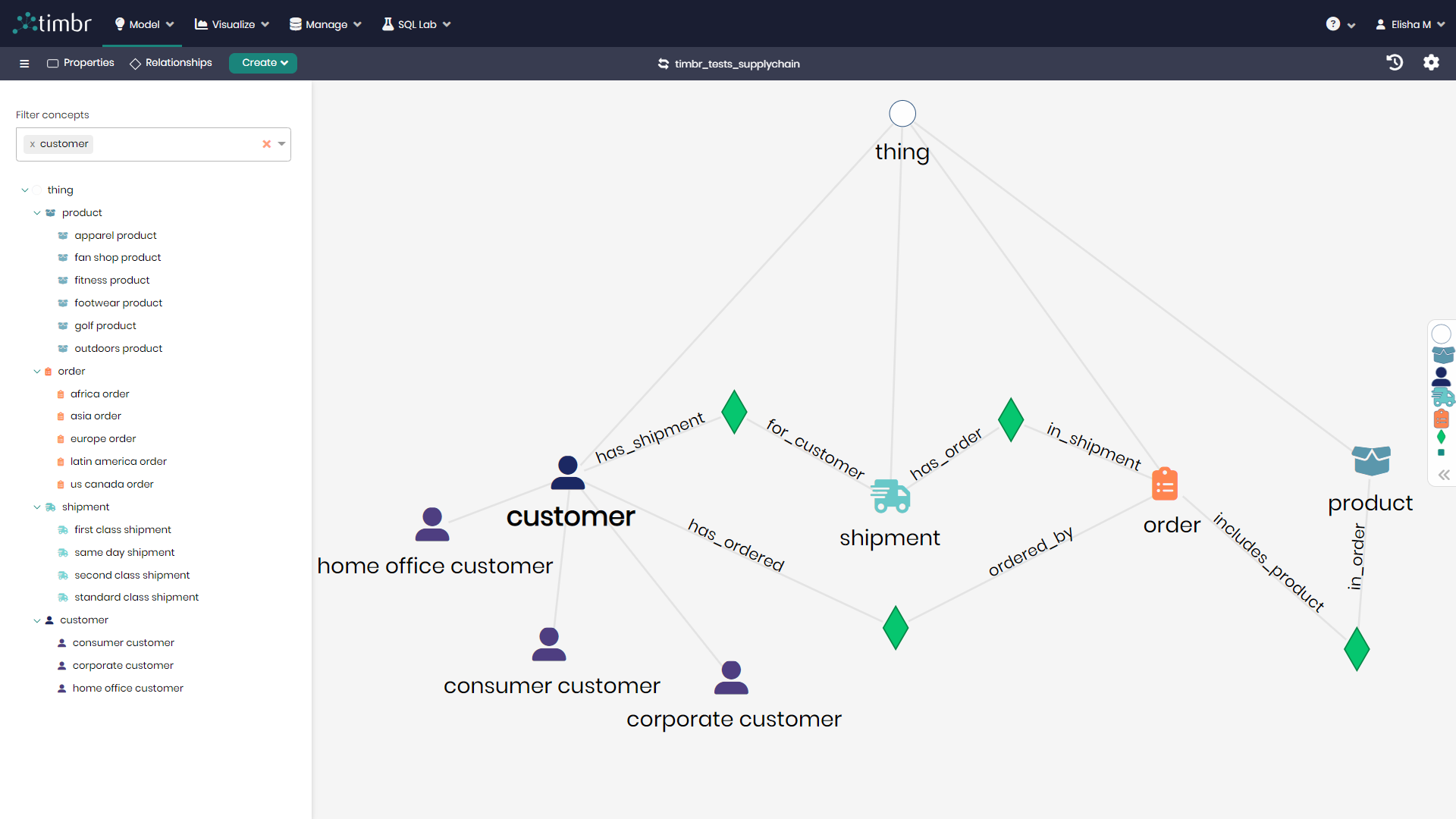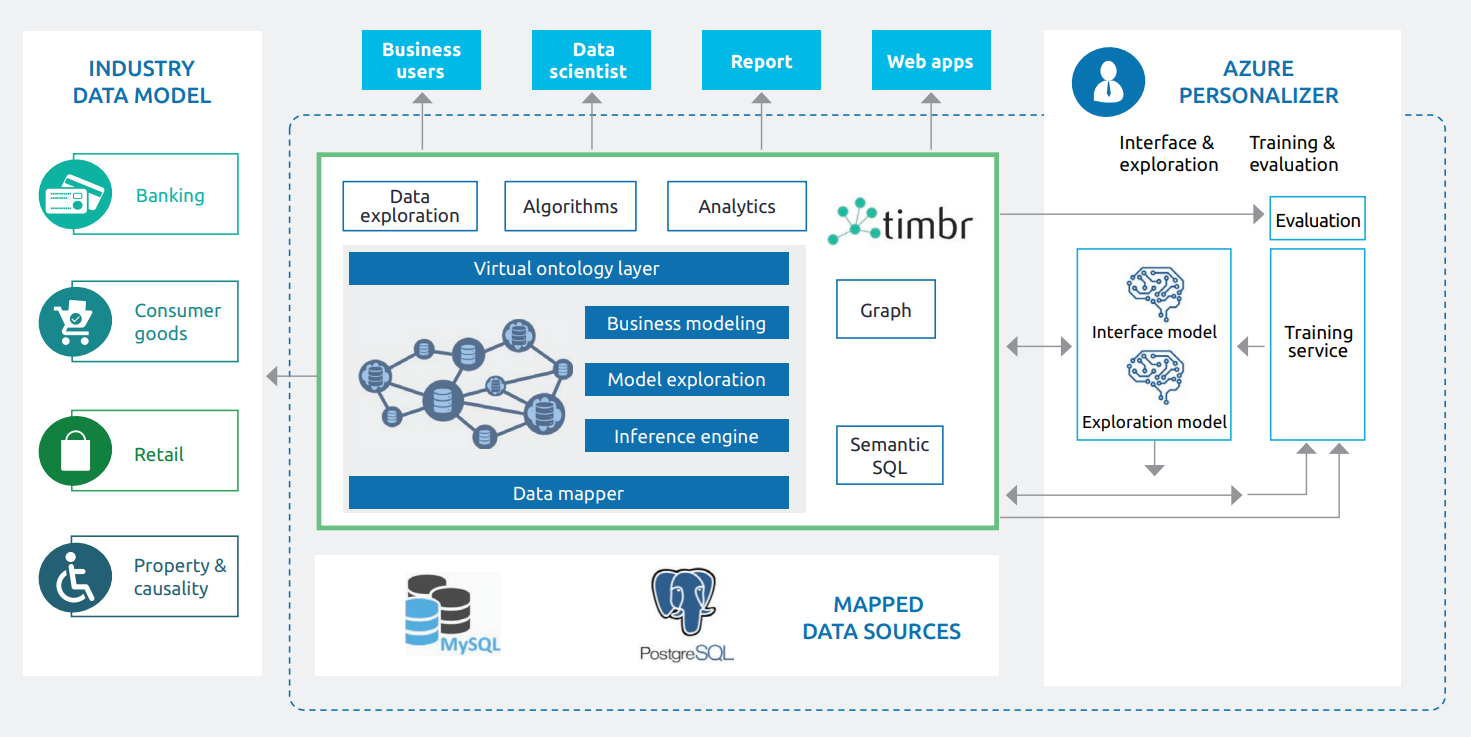Introduction
Hyper-personalization involves leveraging data analytics, artificial intelligence (AI), and real-time customer data to create highly tailored and individualized strategies to optimize customer engagement.
In collaboration with Capgemini, Timbr.ai architected a hyper-personalization solution that combines Timbr’s unique features with Microsoft Synapse and Azure Personalizer, designed for the financial services industry to unlock the potential of their customer data and create tailored experiences that foster customer loyalty and drive market growth.
This article delves into the aspects of hyper-personalization, and presents how, by harnessing Timbr’s capabilities, companies can accelerate their journey to hyper-personalization.
Hyper-Personalization - What for?
Customer-Centric Experience
Gain a comprehensive understanding of each customer’s preferences, behaviors, and needs. This allows delivery of personalized recommendations, customized products, and tailored services that align precisely with individual customer requirements.
Improved Retention
Identify and anticipate customer needs, proactively addressing their concerns and providing relevant solutions. This level of personalized engagement enhances customer loyalty and helps to retain valuable customers.
Enhanced Revenue Generation
Personalized offers and tailored recommendations have the potential to significantly boost cross-selling and upselling opportunities. By identifying the most suitable products and services for each customer, companies can increase revenue streams and maximize customer lifetime value.
Efficient Decision-Making
Gain deep insights into customer behavior patterns and preferences. This information empowers companies to make data-driven decisions, such as identifying the most effective pricing strategies and optimizing product bundles to meet customer demands.
Seamlessly Tailored Personalization to Drive Your Strategic Business Goals
Timbr – The Semantic Graph Platform
The Timbr platform is a database-agnostic software layer that enables users to create virtual data models that represent data as business concepts enriched with semantic relationships and business context. The virtual data models are connected to the underlying databases directly or via a virtualization engine and can connect to any data consumption tool or application via ODBC, JDBC and REST api.
A virtual data model in Timbr is presented as a hierarchy of business concepts (Ontology) which entails logical business definitions and metrics, semantic relationships that replace JOIN statements, and the ability to integrate data from multiple sources into a contextual data model that lives within the organization.
The models are versioned and controlled, fully supporting any access level to enable meta-data management and intuitive data discovery. The data models in Timbr can be directly imported from an existing data model or by using standard SQL create statements. When mapping data to the model, users can apply any transformation or function that the connected database supports to continue and support the exact data consumption requirements.
Unlock the power of personalization
How to Achieve Hyper-Personalization of Products and Services?
Hyper-personalization can be applied regardless of the sector, whether it be healthcare, technology, finance, retail or any other industry. The hyper-personalization solution architecture for financial services implemented jointly by Timbr.ai and Capgemini, offers a streamlined and efficient implementation process.
Using this solution, companies can automatically categorize their customers based on unique preferences and behaviors. This categorization is achieved by identifying patterns in the data, which enable the formation of customer communities. These communities serve as the groundwork for enhancing the basic customer data, allowing the creation of customized offers and messages tailored specifically to those customers who are most likely to make a purchase.
How is this solution implemented?
Step 1 - Transforming Azure Synapse templates into Timbr semantic data models
Timbr allows users to import industry-specific database models from Microsoft Synapse into semantic data models. To enrich the model with conceptual knowledge, users define relationships and business rules. To complete the process, users map relevant datasets to their corresponding business concepts, ensuring a comprehensive and coherent representation of the data within the platform.
Step 2 - Running the community detection graph algorithm in standard SQL
Graph algorithms are advanced analytical techniques applied to data represented in graph form, used to deliver unique insights such as recommendations. Timbr enables graph algorithms in standard SQL without the need to transform data into graph form. Timbr’s algorithm library includes among many others, the Louvain community detection algorithm that groups data as communities characterized by defined commonalities. Timbr users select the Louvain GA template and input relevant data parameters, which capture behaviors such as account activity in social media networks or financial services. This process results in the formation of customer clusters based on the provided data.
Next, users take the outcome of the algorithm and map it to a new knowledge graph concept, enriching their data model by incorporating a community for each customer. The two first steps introduce innovative features based on graph and machine learning techniques, which are then utilized in the third and final stage.
Step 3 – Feeding the Azure Personalizer service
Finally, users feed their output into the Azure Personalizer service, which processes the data and generates recommendations for treatment and rewards. These recommendations are based on the unique features of each customer and the available treatment options. This implementation utilizes the contextual bandit machine learning framework, commonly employed by digitally advanced companies to achieve personalization.
With this solution, automated A/B testing can be conducted by providing alternative treatments to customers who have not historically responded well to the current solution. If the solution discovers that the alternative treatment performs better, the model is updated to adopt the challenger for future interactions.
Conclusion
Hyper-personalization has become a game-changer in many industries, driving customer satisfaction, loyalty, and revenue growth. By leveraging the powerful capabilities of the Timbr graph analytics platform, combined with the architectural solution jointly offered with Capgemini, organizations can unleash the untapped potential of data-driven personalized offers and customized experiences.
We invite you to explore in more detail this solution designed for the financial services industry that can generate data-driven personalized offers for all customers.
Click here to contact Timbr for more information.
How do you make your data smart?
Timbr virtually transforms existing databases into semantic SQL knowledge graphs with inference and graph capabilities, so data consumers can deliver fast answers and unique insights with minimum effort.






